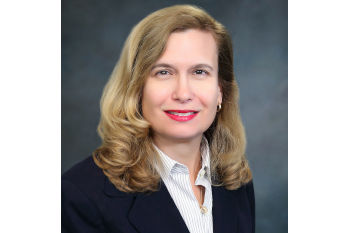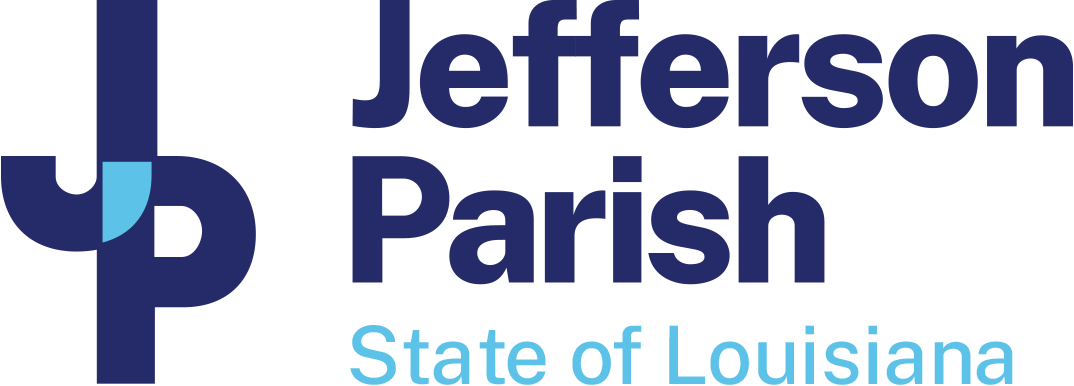Engineering

Angela DeSoto, Director
Engineering
Joseph S. Yenni Building
1221 Elmwood Park Blvd., Suite 802
Jefferson, LA 70123
Phone: (504) 736-6500
Email the Engineering Department
Traffic Engineering Division
2100 Dickory Ave.
Harahan, LA 70123
Phone: (504) 736-6530
Sidewalks / Driveways & Permits
1887 Ames Blvd.
Marrero, LA 70123
Phone: (504) 349-5842
The Department of Engineering was created to assist the operational departments of the consolidated Department of Public Works which is comprised of the Department of Drainage, the Department of Sewerage, the Department of Water, the Department of Streets, the Department of Parkways, the Department of Environmental Affairs, and the Department of Flood Plain Management in matters requiring engineering design, construction supervision, and project management. In addition, the Department encompasses the following Divisions:
Roads and Bridges – Responsible for the following:
- Management, review, and inspection of all major Parish roadways and bridge construction.
- The review and approval of residential driveway permits, commercial site plans, and field inspections.
- Design of concrete restorations in reference to utility failures.
- The inspection of newly developed subdivisions and drainage improvement projects.
- Issuance of letters for sidewalk/right of way violations.
Traffic Engineering Division - Responsible for the following:
- Installation and maintenance of traffic signs, roadway lane stripes and traffic signals on streets in the unincorporated areas of the Parish and on certain major streets in municipalities.
Street Lighting - Responsible for the following:
- Maintenance of street light facilities in the unincorporated areas of the Parish in cooperation with Entergy.
Utilities - Responsible for the following:
- Responsible for management/review of all major public utility construction and Inspections.
- Responsible for all work associated with tie-in or maintenance of existing public utilities along with roadway construction.
Drafting - Responsible for the following:
- Maintaining records of Parish street and utility infrastructure.
SCADA - Responsible for the following:
- The remote monitoring of water, sewer, and drainage facilities throughout the Parish.
Surveying - Responsible for the following:
- Assisting all Public Works Departments with field location layout and requests for topographical information.
Most Frequently Asked Questions:
-
Who is responsible for installing sidewalks, and are all property owners required to have one?
The owner of the property is responsible for installing sidewalks in the right of way between the back of curb/or edge of roadway and their property line. All property owners are required to have sidewalks unless a specific exemption has been granted due to the location.
-
Who is responsible to maintain or replace sidewalks and driveway aprons?
The owner of the property is responsible for the maintenance due to settlement, damages due to trees, etc.
-
How do I get a driveway permit?
Contact the Engineering Site Plan Review Section at (504) 349-5173 or (504) 736-6500 to apply for all residential and commercial driveway permits.
-
What do I do if I receive a certified letter from Jefferson Parish Department of Engineering?
Contact the Engineering Inspections Section at (504) 349-5173 or (504) 736-6500 for instructions, or follow the instructions listed in the letter you received.
-
What do I do if I want to use bricks or pavers for my driveway apron, sidewalks or a brick mailbox on Parish property?
Bricks and/or pavers are only allowed with a waiver and permission from the Engineering Department. Contact the Engineering Inspections Section at (504) 349-5173 or (504) 736-6500 to apply for a waiver.
-
Can you help me locate my sewer clean out or house connection?
Yes in most cases. Just call the Department of Engineering at 736-6800 between the hours of 8:00 a.m. & 4:00 p.m. or have your plumber call. You will need to provide your street address and your legal description (lot and square number) which you can find on your survey when you bought your house or on your property tax bill. As a courtesy to homeowners, plumbers have been providing clean out locations when they file for the final inspection. If this is a very old home, this information may not have been provided.
Also we keep records of house connections at the front property line. These measurements are usually for new construction but may be the only information you have when trying to locate the clean out that the plumber installed on your property.
Once you have located your forward clean out at the front property line or if you already know its location, remove the cover and check to see if it's backed up. If it is, you can call the Sewer Department at 736-6675 between 7:30 a.m. & 3:30 p.m. for East Bank locations and 437-4811 between 7:00 a.m. & 3:00 p.m. for West bank locations or 736-6006 after hours; and they will dispatch a crew to your home to clean the line between your forward clean out and the main sewer line. You are responsible if the blockage is between your forward clean out and your house and must hire a private plumber or do it yourself.
-
Why aren't more stop signs installed?
A stop sign is one of our most valuable and effective control devices when used at the right place and under the right conditions. It is intended to help drivers and pedestrians at an intersection decide who has the right-of-way.
One common misuse of stop signs is to arbitrarily interrupt through traffic by causing it to stop, creating such an inconvenience as to force the traffic to use other routes. Where stop signs are installed as "nuisances" or "speed reducers", there tends to be a high incidence of violation. In residential areas where vehicles are required to stop the speed reduction is effective only in the immediate vicinity of the stop sign. Studies have shown operating speeds to be lower for a distance of 150 to 200 feet before and after the stop condition as vehicles slow down for and then accelerate from the stop sign. Frequently, speeds are actually higher between intersections as drivers apparently attempt to make up for lost time. For these reasons it should not be used as a speed control device.
A pedestrian crossing may appear to be unsafe at an intersection causing a demand for all-way stop control to stop traffic. Now, a vehicle which has been in the intersection for one to two seconds is in the vicinity for a longer period of time. An intersection which previously did not appear to be busy may now look that way. Additionally, a situation of indecision is created as to when to cross as a pedestrian or when to start as a motorist. This situation increases the probability of an incident because the non-motorized user is expecting the motorist stop, which they may or may not do.
Most drivers are reasonable and prudent with no intention of maliciously violating traffic regulations; however when an unreasonable restriction is imposed it may result in more violations. In such cases the stop sign can create a false sense of security in a pedestrian and an attitude of contempt in a motorist. These two attitudes can and sometimes do conflict with undesirable results.
Well developed nationally recognized guidelines help to indicate when stop controls become necessary. These guidelines take into consideration, among other things, traffic volumes, the probability of vehicles arriving at an intersection at the same time, accident history, the length of time traffic must wait to enter the main street, and the availability of safe crossing opportunities for both motorized and non-motorized users. It is the responsibility of the traffic engineer to determine if there is in fact a traffic problem which needs to be addressed and to assure that one is not created by the installation of an unnecessary device.
-
What is the servitude on my property for?
Your survey should call out what type of servitude is on your property. If it doesn't then it may be a general utility servitude which would allow any type of utility use public or private. You can call the Department of Engineering at 736-6800 between 8:00 a.m. & 4:00 p.m. to inquire if there are any sewer, water, or drain lines in this servitude. We will need a copy of your survey to verify locations, which can be faxed to 736-6526 with a short cover letter or mailed to 1221 Elmwood Park Blvd., Suite 802, Jefferson LA 70123. You must contact any/all private utility companies for gas electric telephone or cable television.
The servitude is generally on property that you own but restricts your use of that portion. Different servitudes have different restrictions but usually all include the restriction of no permanent structures of any kind. If this servitude is not used by any utility company and there is no future need, then it may be possible to have it revoked. To pursue this course you should contact the Parish Attorney's office at 736-6300.
-
Do we provide surveys for private property?
This department does not survey private property. We inform the property owner that he/she must hire a professional land surveyor.
-
How do I determine the flood zone for my property?
On December 17, 2012, FEMA launched the Online Letter of Map Change (LOMC) - a new way to submit a request to change a property’s flood zone designation. The new Online LOMC application allows anyone to electronically submit required documents and property information when they are requesting FEMA remove their property from a Special Flood Hazard Area (SFHA).
Visit the FEMA web site’s fact sheet for more details.
